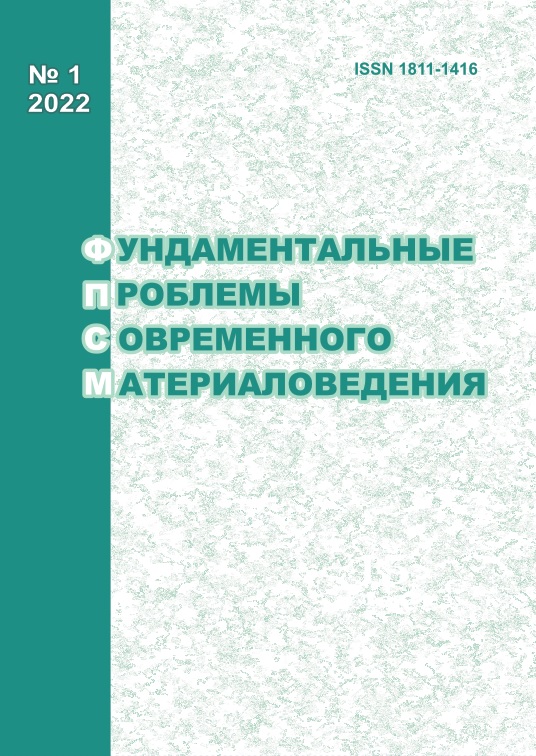ИССЛЕДОВАНИЕ ВЛИЯНИЯ НАНОРАЗМЕРНЫХ ЧАСТИЦ TiO2 НА ФИЗИКО-МЕХАНИЧЕСКИЕ СВОЙСТВА, СТРУКТУРУ И ФАЗОВЫЙ СОСТАВ (ВеО + TiO2)-КЕРАМИКИ
10.25712/ASTU.1811-1416.2022.01.005
Ключевые слова:
наночастицы TiO2, оксид бериллия, диоксид титана, рутил, керамика, физико-механические свойства, кристалл, микроструктура, спекание, кристаллическое строение, фазовый составАннотация
В настоящем исследовании представлены результаты влияния количества нано размерных частиц TiO2 (0,1-2,0 мас.%) и температуры обжига на физико-механические свойства, структуру и фазовый состав оксидно-бериллиевой керамики состава (ВеО + TiO2) изготовленной из порошков микронного размера. Показано, что присутствие наночастиц TiO2 способствует увеличению плотности спеченной керамики. Данный эффект достигается вследствие взаимопроникновения фаз ВеО – TiO2 и увеличения дефектности структуры. Понижение энергии активации процессов обмена мест в зоне границы зерен может быть объяснено связью между диффузией и дефектами строения решетки. Диффузия вдоль границы зерен происходит быстрее, чем в ненарушенной. Присутствие наночастиц также способствует самозалечиванию микропор, что может быть объяснено блокированием наночастицами определенной доли границ раздела между частицами ВеО и созданием диффузионного барьера. Инжекция вакансий внутрь кристалла, повышает свободную энергию системы, делает термодинамически невыгодным его рост, в определенном интервале размеров. Как показано в настоящем исследовании, повышение температуры спекания керамики, способствует трансформации кристаллической структуры TiO2 в более проводящую Ti3O5 с орторомбической структурой. Возникновение электропроводящей фазы, как правило, сопровождается поглощением электромагнитного излучения. Синтезированная керамика актуальна для нужд радио-электронной промышленности: электровакуумные приборы СВЧ – ЭВП, усилители, лампы бегущей и обратной волны, клистроны, клистроды, гироприборы; твердотельные приборы СВЧ; модули СВЧ; комплексированные изделия СВЧ с применением в своем составе ЭВП СВЧ, твердотельных дискретных приборов и модулей СВЧ.











 Журнал «Фундаментальные проблемы современного материаловедения»
Журнал «Фундаментальные проблемы современного материаловедения» Контент доступен под лицензией
Контент доступен под лицензией 
